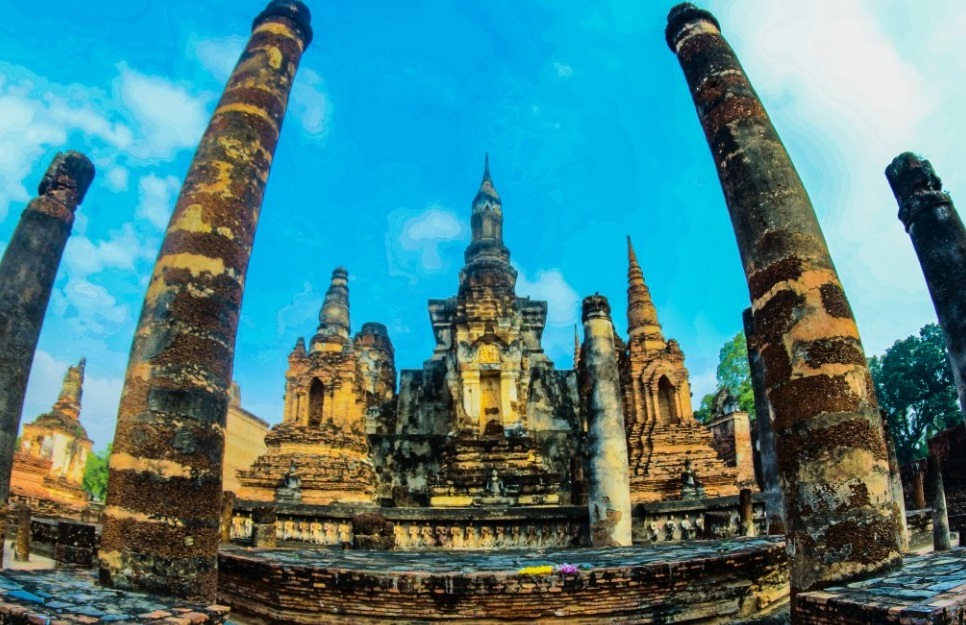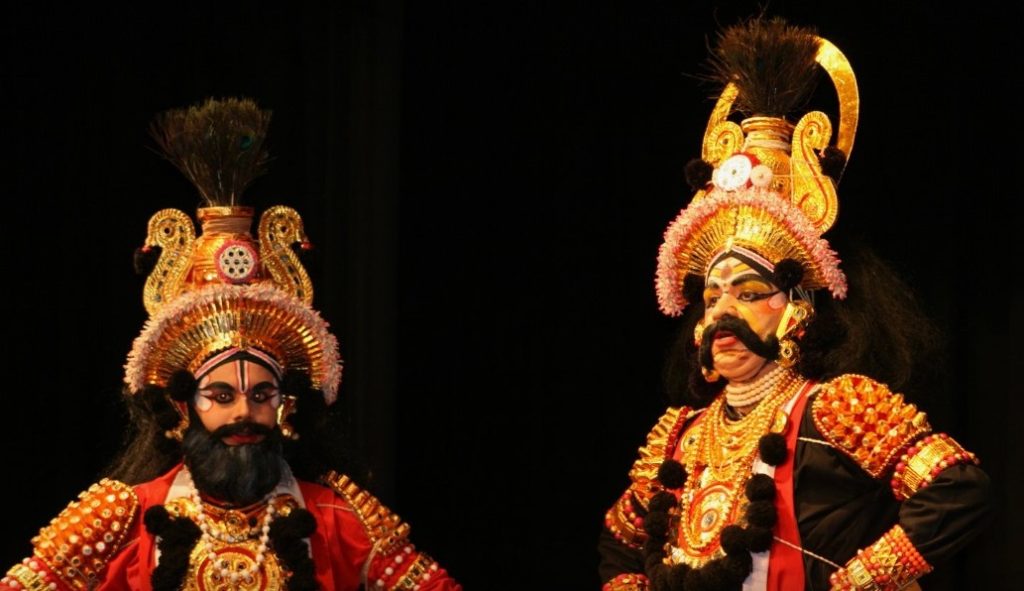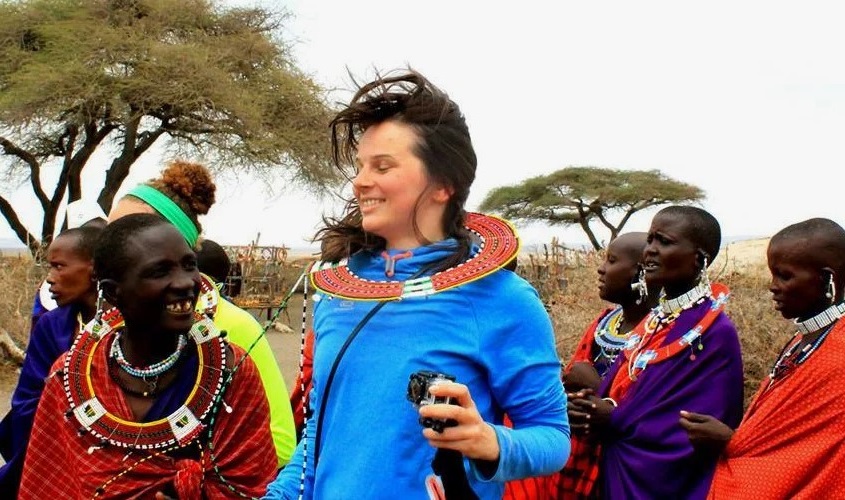
South Asian History and Culture offers a captivating glimpse into the intricate weave of South Asia’s rich history and cultural legacy. This exhibition showcases a diverse array of artifacts, artworks, and narratives that highlight the region’s ancient civilizations, traditions, and contemporary expressions. Through a blend of textiles, sculptures, and multimedia presentations, viewers are immersed in a journey that celebrates the cultural diversity and enduring traditions of South Asia, fostering deeper appreciation and understanding of its vibrant tapestry.
Table of Contents
A. Definition of South Asia
South Asia is a region in the southern part of Asia, typically including countries like India, Pakistan, Bangladesh, Nepal, Sri Lanka, Bhutan, and the Maldives. This region is notable for its large population, diverse cultures, and significant historical impact. It is bounded by the Indian Ocean to the south, the Arabian Sea to the southwest, and the Bay of Bengal to the southeast.
B. Geographical and Cultural Diversity
The region’s geography ranges from the high peaks of the Himalayas to the coastal plains and the Indian Ocean. This diversity in landscape contributes to a wide range of climates, from the tropical to the alpine. Culturally, South Asia is a melting pot of religions, languages, and traditions. It is home to major world religions like Hinduism, Buddhism, Islam, Sikhism, and Jainism. The region is known for its rich artistic heritage, diverse cuisines, and a multitude of languages and dialects.
Early Civilizations in South Asia

A. Indus Valley Civilization
1. Overview
The Indus Valley Civilization, dating back to 3300 BCE, was one of the world’s earliest urban civilizations, alongside those in Mesopotamia and Ancient Egypt. It was primarily located in what is now Pakistan and northwest India. The civilization is known for its advanced urban planning, architecture, and social organization.
2. Achievements and Artifacts
Remarkable achievements of the Indus Valley Civilization include a sophisticated system of urban planning with well-laid streets, drainage systems, and water supply systems. Artifacts unearthed like pottery, seals, jewelry, and tools depict a culture rich in craftsmanship. The mysterious script of the civilization, still undeciphered, adds to the enigma of this ancient society.
B. Vedic Period
1. Arrival of the Indo-Aryans
The Vedic Period, which followed the Indus Valley Civilization, began around 1500 BCE with the arrival of the Indo-Aryans. This period is marked by significant transitions in social structures, languages, and religious practices.
2. Development of Vedic Literature
The Vedic Period is named after the Vedas, a collection of texts that form the oldest layer of Sanskrit literature and the oldest scriptures of Hinduism. These texts include hymns, philosophical discussions, and ritualistic guidance, reflecting the religious beliefs, social structure, and cultural practices of the time.
The Maurya and Gupta Empires
A. Maurya Empire
1. Chandragupta Maurya
The Maurya Empire, established by Chandragupta Maurya around 322 BCE, marked the first large-scale empire in South Asia. Chandragupta’s reign was notable for its military and political successes, including the conquest of the Macedonian satrapies left by Alexander the Great in the northwest.
2. Ashoka the Great and His Contributions
Ashoka the Great, Chandragupta’s grandson, is one of the most celebrated rulers in Indian history. Reigning from 268 to 232 BCE, Ashoka embraced Buddhism after the bloody Kalinga War. He is remembered for his promotion of Buddhist values, his efforts in social and animal welfare, and the Ashoka Pillars inscribed with edicts that provide insights into his governance and philosophy.
B. Gupta Empire
1. Achievements in Art, Science, and Mathematics
The Gupta Empire, spanning from around 320 to 550 CE, is often referred to as the “Golden Age” of India due to significant advancements in various fields. This era witnessed remarkable achievements in art, exemplified by exquisite sculptures and paintings. The period was also notable for scientific and mathematical advancements, including the concept of zero, decimal system, surgery, astronomy, and metallurgy.
2. Decline of the Gupta Empire
The decline of the Gupta Empire was gradual, resulting from a combination of factors including internal political instability, financial difficulties, and external invasions, particularly by the Huns.
Islamic Influence and the Mughal Empire
A. Arrival of Islam in South Asia
Islam first arrived in South Asia in the 7th century through Arab traders and later through invasions. The establishment of the Delhi Sultanate in the 13th century furthered the spread of Islam in the region.
B. Mughal Empire
1. Babur and the Establishment of the Empire
The Mughal Empire began with the conquests of Babur in 1526. Babur, a descendant of Timur and Genghis Khan, established a foothold in the Indian subcontinent by defeating the Sultan of Delhi at the Battle of Panipat.
2. Akbar the Great and Cultural Synthesis
Akbar the Great, Babur’s grandson, reigned from 1556 to 1605 and is known for his religious tolerance and efforts in cultural synthesis. He adopted policies that integrated non-Muslims into the empire’s administration and promoted a blend of Persian, Indian, and Islamic art and culture.
3. Decline of the Mughal Empire
The decline of the Mughal Empire in the late 17th and early 18th centuries was due to a combination of factors, including administrative inefficiencies, military defeats, and the rise of regional powers.
European Colonization and British Rule
A. Arrival of the Portuguese, Dutch, and British
European colonization in South Asia began with the arrival of the Portuguese in the 15th century, followed by the Dutch and the British. The British East India Company gradually expanded its influence, establishing control over much of the subcontinent.
B. Impact of British Rule on South Asian Society
British rule significantly impacted South Asian society, including the introduction of English education, legal and administrative systems, and railways. However, it also led to economic exploitation, social upheaval, and cultural changes.
C. Independence Movements and the Partition of India
The 20th century saw the rise of independence movements, prominently led by figures like Mahatma Gandhi and Jawaharlal Nehru. This culminated in the independence and partition of India in 1947, creating two separate nations, India and Pakistan, amidst widespread communal violence.
Post-Independence Era
A. Formation of Modern South Asian Nations
Following the partition of India in 1947, several modern nations emerged in South Asia. India and Pakistan became independent, followed by the independence of Bangladesh from Pakistan in 1971. These nations, along with Sri Lanka, Nepal, Bhutan, and the Maldives, have since worked towards establishing their identities as sovereign states.
B. Economic and Social Challenges
Post-independence, South Asian countries have faced numerous challenges. These include poverty, population growth, political instability, and regional conflicts. Economically, these nations have diverse profiles, ranging from agricultural-based economies to rapidly growing technology sectors.
C. Cultural Revival and Preservation
There has been a concerted effort in the region to revive and preserve its rich cultural heritage. This includes promoting traditional arts, crafts, languages, and historical sites, alongside embracing modern artistic expressions and technological advancements.
South Asian Arts and Culture

A. Literature
1. Classical and Contemporary Literature
South Asian literature has a long and diverse history, ranging from ancient Sanskrit epics like the “Mahabharata” and “Ramayana” to vibrant contemporary works that address modern themes and issues.
2. Notable Authors and Works
Notable authors include Rabindranath Tagore, a Nobel laureate from India, R.K. Narayan, known for his works set in the fictional town of Malgudi, and contemporary authors like Arundhati Roy and Salman Rushdie. Their works have gained international acclaim for their storytelling and exploration of social and political themes.
B. Music and Dance
1. Classical and Folk Traditions
South Asian music and dance have a rich tradition, with classical forms like Bharatanatyam, Kathak, and Odissi in dance, and Hindustani and Carnatic music. Folk traditions vary widely across the region, reflecting local cultures and histories.
2. Influence on Global Music
South Asian music has significantly influenced global music, with elements of Indian classical music being incorporated into popular music by Western artists. The region’s music has also gained international popularity through Bollywood film music.
Religion and Philosophy
A. Hinduism
Hinduism, originating in the Indian subcontinent, is a major religion in South Asia. It’s characterized by a diverse array of beliefs, practices, and rituals.
B. Buddhism
Buddhism, founded by Siddhartha Gautama, originated in ancient India and spread across Asia. It has significantly influenced the cultures and philosophies of the region.
C. Islam
Islam, introduced through invasions and trade, has a significant presence in South Asia, especially in Pakistan and Bangladesh. It has shaped the region’s history, culture, and art.
D. Sikhism and Other Religions in the Region
Sikhism, founded by Guru Nanak in the Punjab region, is another major religion. Other religions, including Jainism, Christianity, and Zoroastrianism, also contribute to the region’s religious diversity.
Contemporary Issues
A. Political Challenges
History and Culture of South Asia countries face a range of political challenges, including governance issues, corruption, and regional tensions. The long-standing conflict between India and Pakistan, particularly over Kashmir, is a significant issue, as are internal political struggles and the rise of nationalism in various countries.
B. Socioeconomic Disparities
Despite economic growth, South Asia continues to grapple with stark socioeconomic disparities. Issues like poverty, lack of education, and inadequate healthcare are prevalent, alongside growing concerns about income inequality and urban-rural divides.
C. Cultural Globalization and Preservation Efforts
The region faces the dual challenge of embracing globalization while preserving its rich cultural heritage. While cultural globalization has led to increased exchange of ideas and practices, there are concerns about the erosion of traditional cultures. Efforts are being made to preserve languages, art forms, and customs.
Diaspora and Global Influence
A. South Asian Diaspora Communities
The South Asian diaspora, encompassing millions of people, has spread across the globe, with significant communities in the USA, UK, Canada, and the Middle East. These diaspora communities maintain cultural ties to their countries of origin while contributing to their host countries.
B. Cultural Contributions of South Asians Abroad
South Asians abroad have made substantial cultural contributions, especially in arts, literature, and cuisine. They have introduced and popularized South Asian traditions, festivals, and culinary delights in their adopted homelands.
C. Impact on Global Arts, Cuisine, and Fashion
The global impact of South Asia is evident in arts, cuisine, and fashion. Bollywood’s influence, the popularity of South Asian cuisine, and the adoption of South Asian fashion and textiles (like sarees, kurtas) in global fashion trends are notable examples.
Technological and Scientific Advancements
A. Modern Achievements in Technology and Science
South Asia has made significant strides in technology and science, with India leading in sectors like information technology, pharmaceuticals, and engineering.
B. Contributions to Fields such as IT, Medicine, and Space Exploration
South Asian countries, particularly India, have contributed to IT, with Indian IT firms and professionals being integral to the global IT industry. In medicine, South Asian doctors and researchers play vital roles globally. The Indian Space Research Organisation (ISRO) has made notable achievements in space exploration, including Mars and lunar missions.
C. South Asian Innovators and Their Global Impact
South Asian innovators, both within the region and in the diaspora, have had a global impact. Figures like Satya Nadella, CEO of Microsoft, and Sundar Pichai, CEO of Alphabet Inc., are prominent examples. The region has also produced Nobel laureates in various fields, reflecting its intellectual contributions to the world.
Environmental Challenges and Conservation Efforts
A. Environmental Issues Facing South Asia
South Asia faces significant environmental challenges, including air and water pollution, deforestation, and climate change impacts. Rapid urbanization and industrialization have exacerbated these issues, affecting biodiversity and public health.
B. Conservation Initiatives and Sustainable Practices
Numerous conservation initiatives aim to address these challenges. These include government policies, NGO-led efforts, and international collaborations focusing on wildlife conservation, forest restoration, and sustainable agriculture practices.
C. Traditional Ecological Knowledge and Practices
There is a growing recognition of the role of traditional ecological knowledge and practices in conservation. Indigenous and rural communities in South Asia have long employed sustainable ways of living that are now being revisited and integrated into modern conservation strategies.
Cross-Cultural Exchanges

A. Influences from Neighboring Regions
South Asia has historically been influenced by its neighbors through trade, conquest, and cultural exchange. These influences include Persian and Central Asian impacts on North Indian culture, and Southeast Asian influences on the art and architecture of Eastern India.
B. Historical Trade Routes and Cultural Exchanges
Historical trade routes, like the Silk Road, played a vital role in cultural exchanges. These routes facilitated the spread of religions, art, and cuisine, enriching the cultural tapestry of South Asia.
C. Modern-Day Collaborations and Partnerships
In the modern era, South Asia continues to engage in cultural, economic, and technological collaborations with countries around the world. These partnerships have led to a fusion of ideas and innovations.
Future Prospects
A. Emerging Trends in South Asian History and Culture
Emerging trends include digital preservation of cultural artifacts, increasing global influence of South Asian cuisine and fashion, and a growing focus on contemporary social issues in literature and cinema.
B. Potential Areas for Further Research and Exploration
There is vast potential for research in areas like the impact of climate change on South Asian societies, the role of technology in cultural preservation, and the dynamics of regional politics and economics.
C. Importance of Preserving and Promoting South Asian Heritage
Preserving and promoting South Asian heritage is crucial for maintaining cultural diversity and identity. This includes safeguarding intangible cultural heritage, such as languages, rituals, and performing arts.
References
A. Citations for Key Historical Events, Cultural Aspects, and Scholarly Works
For accurate and detailed information, refer to academic journals, historical texts, and publications by renowned scholars in Heritage of South Asia. Key events and cultural aspects should be cross-referenced with reliable sources.
B. Recommended Readings and Resources
Recommended resources include:
- Books by authors like Romila Thapar, Bipan Chandra, and Amartya Sen for historical perspectives.
- Journals like the “Journal of South Asian Studies” for scholarly articles.
- Websites of cultural organizations and museums for insights into art, music, and dance.
Table of Breakdown:
| Section | Subsections/Key Points |
| Introduction | – Definition of South Asia |
| – Geographical and Cultural Diversity | |
| Early Civilizations in South Asia | – Indus Valley Civilization |
| – Overview | |
| – Achievements and Artifacts | |
| – Vedic Period | |
| – Arrival of the Indo-Aryans | |
| – Development of Vedic Literature | |
| The Maurya and Gupta Empires | – Maurya Empire |
| – Chandragupta Maurya | |
| – Ashoka the Great and His Contributions | |
| – Gupta Empire | |
| – Achievements in Art, Science, and Mathematics | |
| – Decline of the Gupta Empire | |
| Islamic Influence and the Mughal Empire | – Arrival of Islam in South Asia |
| – Mughal Empire | |
| – Babur and the Establishment of the Empire | |
| – Akbar the Great and Cultural Synthesis | |
| – Decline of the Mughal Empire | |
| European Colonization and British Rule | – Arrival of the Portuguese, Dutch, and British |
| – Impact of British Rule on South Asian Society | |
| – Independence Movements and the Partition of India | |
| Post-Independence Era | – Formation of Modern South Asian Nations |
| – Economic and Social Challenges | |
| – Cultural Revival and Preservation | |
| South Asian Arts and Culture | – Literature |
| – Classical and Contemporary Literature | |
| – Notable Authors and Works | |
| – Music and Dance | |
| – Classical and Folk Traditions | |
| – Influence on Global Music | |
| Religion and Philosophy | – Hinduism |
| – Buddhism | |
| – Islam | |
| – Sikhism and Other Religions in the Region | |
| Contemporary Issues | – Political Challenges |
| – Socioeconomic Disparities | |
| – Cultural Globalization and Preservation Efforts | |
| Diaspora and Global Influence | – South Asian Diaspora Communities |
| – Cultural Contributions of South Asians Abroad | |
| – Impact on Global Arts, Cuisine, and Fashion | |
| Technological and Scientific Advancements | – Modern Achievements in Technology and Science |
| – Contributions to Fields such as IT, Medicine, and Space Exploration | |
| – South Asian Innovators and Their Global Impact | |
| Environmental Challenges and Conservation Efforts | – Environmental Issues Facing South Asia |
| – Conservation Initiatives and Sustainable Practices | |
| – Traditional Ecological Knowledge and Practices | |
| Cross-Cultural Exchanges | – Influences from Neighboring Regions |
| – Historical Trade Routes and Cultural Exchanges | |
| – Modern-Day Collaborations and Partnerships | |
| Future Prospects | – Emerging Trends in South Asian History and Culture |
| – Potential Areas for Further Research and Exploration | |
| – Importance of Preserving and Promoting South Asian Heritage | |
| References | – Citations for Key Historical Events, Cultural Aspects, and Scholarly Works |
| – Recommended Readings and Resources |
Conclusion:
The South Asian tapestry is woven with threads of diverse history, rich cultural heritage, and significant contributions to the global stage. From ancient civilizations to the challenges of the modern era, the region has evolved dynamically, leaving an indelible mark on literature, arts, philosophy, and science.
Frequently Asked Questions (FAQ):
- What is South Asia’s geographical and cultural diversity?
- What were the key achievements of the Indus Valley Civilization?
- Who were the major rulers of the Maurya and Gupta Empires?
- How did Islam influence South Asia, and what was the Mughal Empire’s significance?
- What impact did European colonization have on South Asian society?
- How did independence movements lead to the partition of India?
- What are the challenges faced by South Asian countries post-independence?
- Who are some notable authors and musicians from South Asia?
- How has the South Asian diaspora influenced global arts and cuisine?
- What are the environmental challenges in South Asia, and how are they being addressed?


